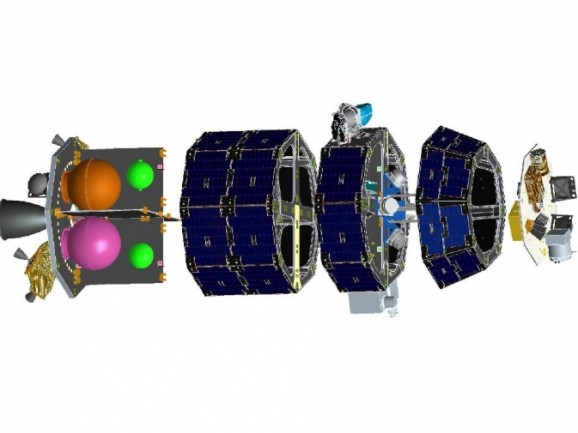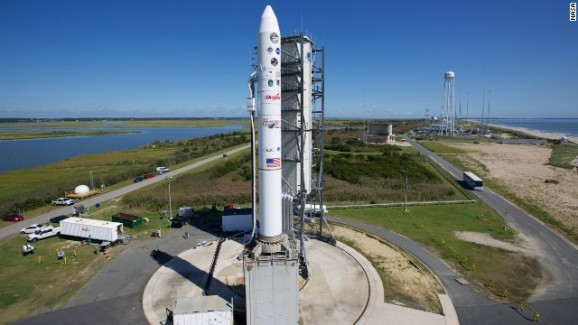NASA’s LADEE Moon Probe Puts On Show For The Eastern U.S.
This article is more than 2 years old
 Late Friday night, NASA launched a Minotaur V rocket carrying a lunar orbiter called LADEE (Lunar Atmosphere and Dust Environment Explorer). The rocket was visible to much of the northeast seaboard as it arced through the sky.
Late Friday night, NASA launched a Minotaur V rocket carrying a lunar orbiter called LADEE (Lunar Atmosphere and Dust Environment Explorer). The rocket was visible to much of the northeast seaboard as it arced through the sky.
LADEE, which despite its adorable acronym is unmanned (and unwomaned), is a “modular common spacecraft bus” that weighs roughly 850 pounds and is the length of a small car. The modular components and parallel assembly keep design costs down and shortens launch preparation time. It only takes 295 watts to power—that’s akin to five 60-watt light bulbs.

LADEE will spend 30 days getting to the moon, 30 days in lunar orbit, and 100 days conducting scientific operations. The mission’s goal is to collect data on the atmosphere and the surface of the moon in order to ascertain what impact the environment has on moon dust, and whether it rises to become part of the lunar atmosphere.
Back when we put astronauts on the moon, they noticed that when the sun rises over the lunar horizon, the moon begins to glow. Scientists believe that sunlight-charged dust might cause this phenomenon, but they’re not sure. The lunar atmosphere is significantly thinner than Earth’s blend of oxygen and nitrogen, but scientists don’t know exactly what it’s made of. Figuring this out would help scientists better understand the atmospheres of other moons, asteroids, and small planets.

While the liftoff was smooth, there was some concern shortly after. During routine technical checks, LADEE shut down its reaction wheels. NASA’s operations team believes this was due to fault protection safeguards, which help stabilize and position the orbiter. The team disabled the fault protection limits (and later re-enabled certain aspects of them), and the wheels came back online. The explorer has attained a comfortable safe-mode profile, which means that if there were any passengers, they could safely turn their electronic devices back on. Engineers plan to study the fault protection program, and the associated limits, in order to avoid such snags in the future. For now, however, NASA doesn’t believe that this will present any further problems.
LADEE should reach the moon on October 6.












